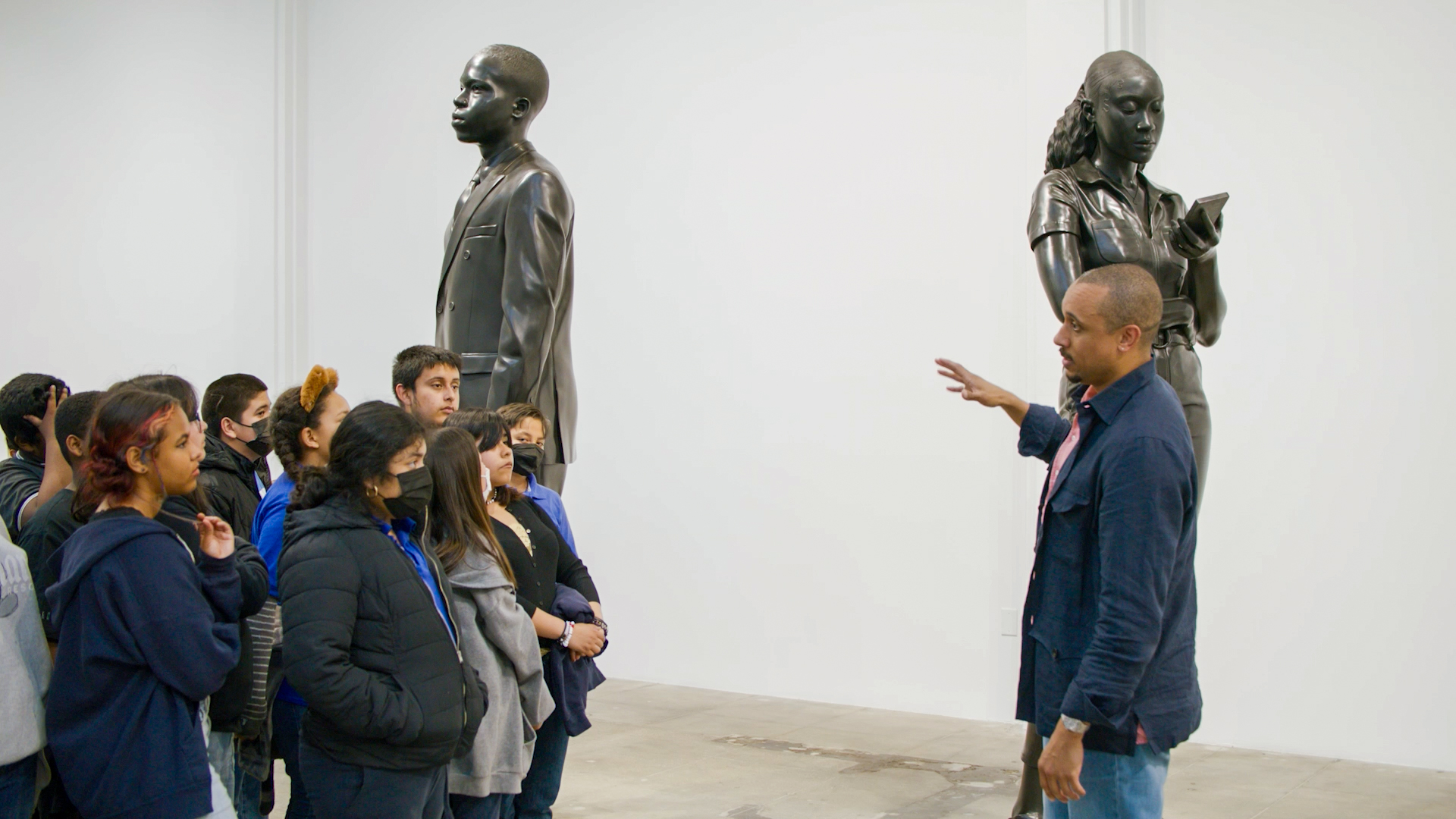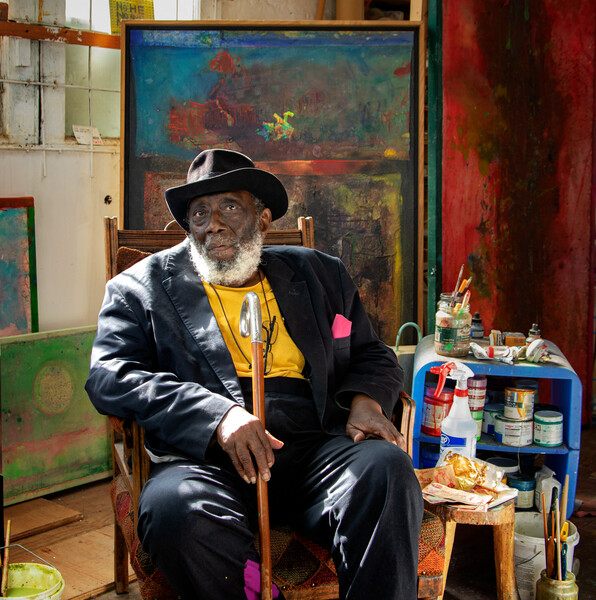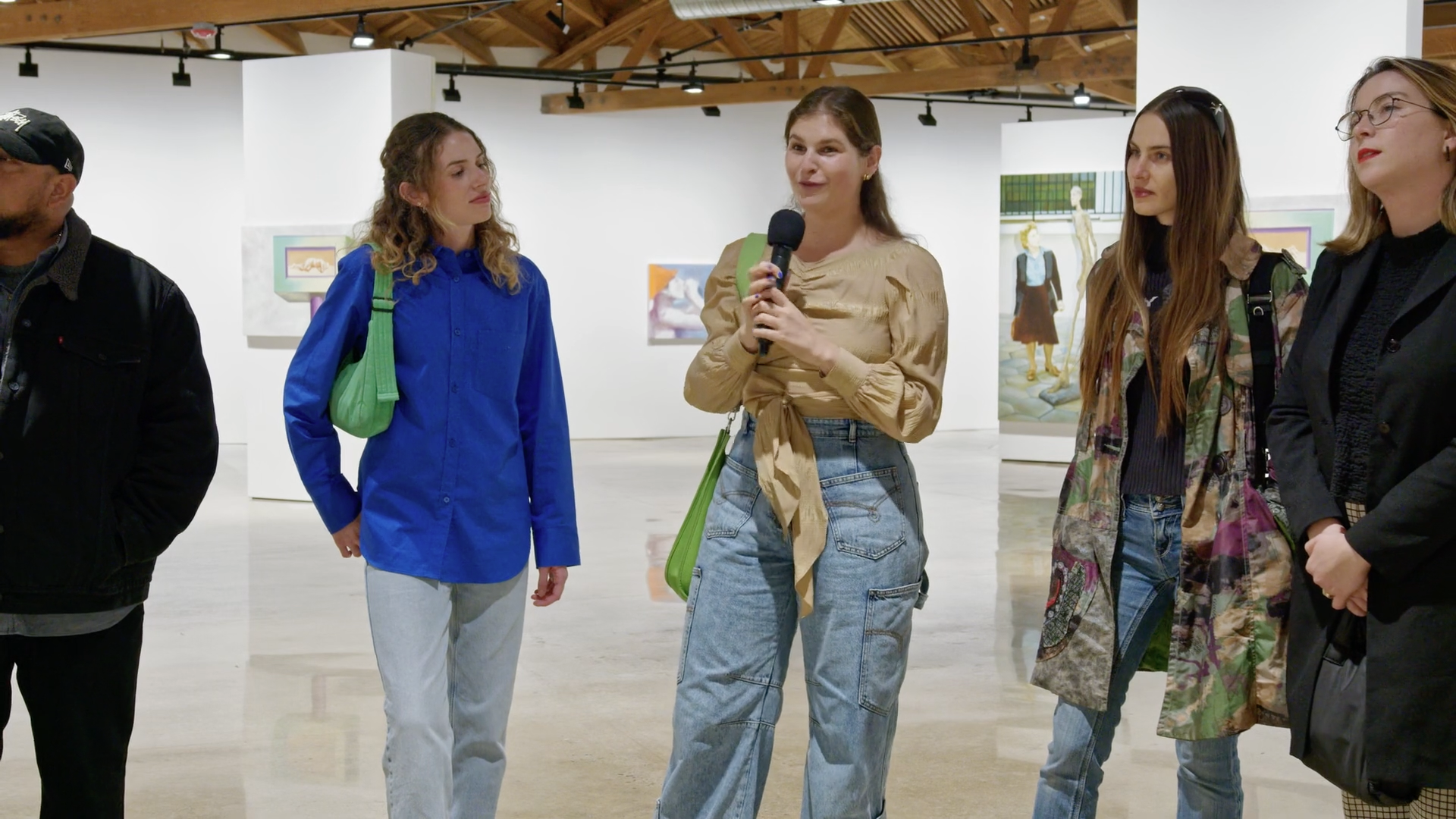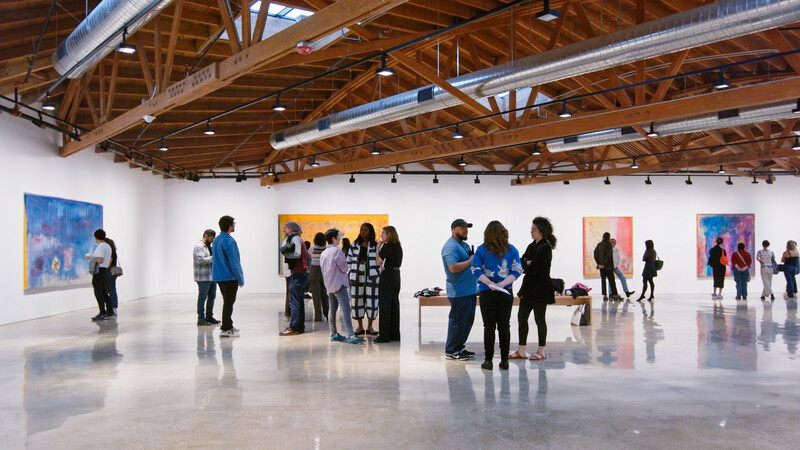
Portrait of George Condo © George Condo. Courtesy the artist.
Teachers’ Notes: George Condo
This resource has been produced to accompany the exhibition ‘George Condo. Ideals of the Unfound Truth’ at Hauser & Wirth London from 13 Oct – 23 Dec 2021.
About George Condo
Born in Concord, New Hampshire in 1957, George Condo lives and works in New York City. He studied Art History and Music Theory at the University of Massachusetts in Lowell before relocating to New York, where he worked as a printer for Andy Warhol. In 1985, Condo moved to Paris, subsequently spending a decade moving between New York and Europe. Condo has forged a relentlessly inventive path, using technical skill and canonical knowledge to channel the painterly modes of American and European art history into works of astonishing originality.
Condo is a defining figure of contemporary American painting and his work can be found in numerous internationally renowned public collections: Centre George Pompidou, Paris; Tate Modern, London; and, The Museum of Modern Art, New York. Opening 25 September 2021, the Long Museum in Shanghai will present the largest solo exhibition by George Condo in Asia to date, which will feature up to one hundred and fifty works by Condo.
What does the exhibition look like?
The exhibition features new drawings and paintings by Condo. These works are portraits, not of living individuals but of invented characters, represented in ways that combine various viewpoints to simultaneously reflect different emotions in an abstract web of fragmented psychological states. As well as capturing the complex mind and psyche of a person, Condo’s portraits have taken on landscape painting qualities, where gestural paint strokes resemble things we might see in the natural world.

George Condo, The Day I Stopped Drinking, 2021 © George Condo. Courtesy the artist. Photo: Martin Parsekian.
How does he make his work?
Condo has a life-long love of drawing and music. He uses the terms ‘rhythm’ and ‘tempo’ to describe the process of drawing and the freedom it brings, comparing the process to Jazz music in which there is a core order and yet possibility for improvisation and spontaneity.
Condo first chooses challenging colour combinations to draw the figures and forms, followed by layers of paint, that only allows certain elements of the original forms to survive. Condo says, ‘I like to make it complicated for myself in terms of colour and tonality… it makes it more interesting to find my way through it all, to give it a shape, a form, a balance’.
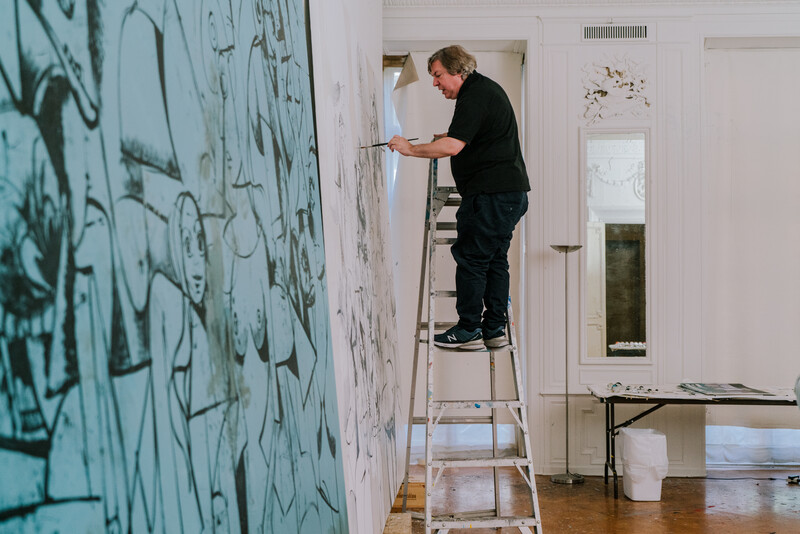
Photo: Jake Naughton, 2021
What are the main themes in George Condo’s work?
Art History
Condo combines past pictorial languages and motifs to create original images that merge canonical art history with contemporary culture. Often the presence of multiple historical moments can be felt in a single work. He cites Rembrandt, Hals, Picasso, De Kooning, Rothko, Guston, and Degas as all having an influence on his work. Condo says, ‘The only way for me to feel the difference between every other artist and me is to use every artist to become me.’ In 2016 his work was presented alongside some of his major art historical reference points: masterpieces by Cézanne, Picasso, Matisse, Klee, and Giacometti, in ‘Confrontation’ at the Staatliche Museen zu Berlin – Museum Berggruen in Berlin, Germany.
Chaos
Condo sees the chaos that is present in the world as a driving force for creation and he regards his works as ‘harmonic resolutions’ to radical divisive elements in society. The process of making art is a way for Condo to resolve these tensions.
Dismantling Art Historical Notions of Hierarchy
The process and subject of Condo’s work collapses traditional hierarchies, between painting and drawing, the beautiful and the grotesque, and the comic and the tragic.

George Condo, The Blues Musician, 2021 © George Condo. Courtesy the artist. Photo: Martin Parsekian
Music
Condo studied Music Theory at university and likens his drawing process to Jazz music which retains a core order, following a musical progression, and allowing for increased spontaneity and improvisation.
Psychological States
Most of Condo’s paintings are portraits depicting different and yet simultaneous states of mind. Artificial Realism is the term used by Condo to describe some of his paintings. ‘Picasso painted a violin from four different perspectives at one time,’ Condo said. ‘I do the same with psychological states. Four of them can occur simultaneously. Like glimpsing a bus with one passenger howling over a joke they’re hearing down the phone, someone else asleep, someone else crying – I’ll put them all in one face.’
Does he work in other ways?
Condo has also worked in sculpture and printmaking. His 13 ft gold leaf sculpture ‘Constellation of Voices’ (2019) was recently acquired as a permanent gift to The Metropolitan Opera House in Lincoln Center for the Performing Arts.

Installation view of ‘Constellation of Voices’, Metropolitan opera at Lincoln Center, New York, NY © George Condo
What other artists does he relate to?
Edgar Degas (1834 – 1917) was a French Impressionist artist famous for his pastel drawings and oil paintings.
Philip Guston (1913 – 1980) is one of the great luminaries of twentieth-century art. His commitment to producing work from genuine emotion and lived experience ensures its enduring impact.
Frans Hals the Elder (c. 1582 – 1666) was a Dutch Golden Age painter, normally of portraits, who lived and worked in Haarlem.
Pablo Picasso (1881 – 1973) was a Spanish painter, sculptor, etcher, lithographer, ceramist and designer, who has had enormous influence on 20th century art and worked in an unprecedented variety of styles including Cubism.
Rembrandt Harmenszoon van Rijn (1606 – 1669), usually simply known as Rembrandt, was a Dutch Golden Age painter, printmaker and draughtsman. An innovative and prolific master in three media, he is generally considered one of the greatest visual artists in the history of art and the most important in Dutch art history.
Andy Warhol (1928 – 1987) was an American artist, film director, and producer who was a leading figure in the visual art movement known as pop art. Condo worked at Andy Warhol’s Factory, during which time he met him only once. Years later, though, Warhol bought several paintings from one of Condo’s first shows.
GLOSSARY
Canon of Art History
The conventional timeline of artists who are sometimes considered as ‘Old Masters’ or ‘Great Artists’. Today’s art history attempts to question these rules of ‘greatness’, considering issues of gender, race, class, and geography among others.
Chaos
Complete disorder and confusion.
Contemporary Culture
Current, shared themes, beliefs and values of the society.
Drawing
A technique in which images are depicted on a surface by making lines, though drawings can also contain tonal areas, washes and other non-linear marks.
Emotion
Instinctive or intuitive feeling as distinguished from reasoning or knowledge.
Hierarchy
A system in which things (or people) are put at various levels or ranks according to their importance.
Jazz Music
Jazz is a style of music that was invented by African American musicians in the early part of the twentieth century. Jazz music has very strong rhythms and often involves improvisation.
Motif
A motif is a recurring fragment, theme or pattern that appears in a work of art.
Painting
In art, the term painting describes both the act of painting, (using either a brush or other implement, such as palette knife, sponge, or airbrush to apply the paint); and the result of the action – the painting as an object.
Portrait
A portrait is a representation of a particular person.
Psychological
Relating to the human mind or feelings.
Psyche
The human mind, soul or spirit.
Realism
Realism refers to an artistic movement characterised by subjects painted from everyday life in a naturalistic manner; however the term is also generally used to describe artworks painted in a realistic almost photographic way.
State of Mind
A person’s mood and the effect that mood has on the person’s thinking and behaviour.
Viewpoint
Someone’s viewpoint is the way that they think about things in general, or the way they think about a particular thing.

George Condo, Escape From Humanity, 2021 © George Condo. Courtesy the artist. Photo: Genevieve Hanson
Practical activity prompts and ideas for discussion:
Ideas for discussion
Work with a partner to look at one of the portraits and list the different emotions simultaneously taking place. Did you and your partner agree on the different emotions you observed? Do we all have the same viewpoints?
Look at one of the portraits in this exhibition; who do you feel that person might be, what do you think their life could be like?
Describe a situation in which the individual might experience simultaneous competing and different emotions.
Discuss the concept of a canon of art history and how today’s art history attempts to question these rules of ‘greatness’, considering issues of gender, race, class, and geography among others. Examine work by artists such as Degas, Picasso, Rembrandt, and think about the ways in which Condo’s portraits both belong to and yet subvert the art historical canon.
How do you think that Condo’s work subverts traditional notions of the hierarchy between painting and drawing; a beautiful subject and an ugly subject; the comic and the tragic?
Activity 1: Make a photomontage portrait
Find some old magazines or newspapers
Look for portraits, collect as many as you can
Select one large face and cut it out. Stick it onto a piece of paper
Cut out different features: eyes, nose, mouth, ears, hair
Stick your different features onto the face to make a portrait of mixed emotions and appearances
Activity 2: Make a psychological portrait
George Condo said that in Cubism, artists like Picasso captured the same subject from many different viewpoints. For Condo, a number of different emotions can take place in a single portrait.
Write down as many different emotions that you can think of, such as confused, delighted, excited; think of at least 7
Look in a mirror and practice making an expression to fit each emotion
Take each emotion at a time and make a line drawing of your face
Repeat this, 6 more times for each emotion but draw each new drawing over the top of your previous ones
Use a thick black pen to go over some of the lines of each drawing
Do you want add colour? You may want to paint your psychological portrait, if so, use bright colours like Condo!
Activity 3: Make a fractured drawing
Close your eyes and draw shapes on a piece of paper without taking your pen or pencil off the page. Open your eyes; what forms can you see in the overlapping shapes?
Turn your overlapping forms into faces and people, animals, plants, buildings, etc.
Colour-in some of the shapes with bright colours
Activity 4: Draw to music
Condo has a life-long love of drawing and music
Play Jazz music
Try to feel each song with minimal thought and use a pencil to create different marks and form changing the speed with you draw, the pressure and the position of the pencil, to echo the rhythm and tempo of the music.
Supplementary research George Condo
For more activities related to George Condo and portraits visit: Tate Gallery: Make Pop Art like Andy Warhol National Portrait Gallery: Young People’s Guide to Self-Portraiture BBC: How to Draw a Portrait
Resources
1 / 8
